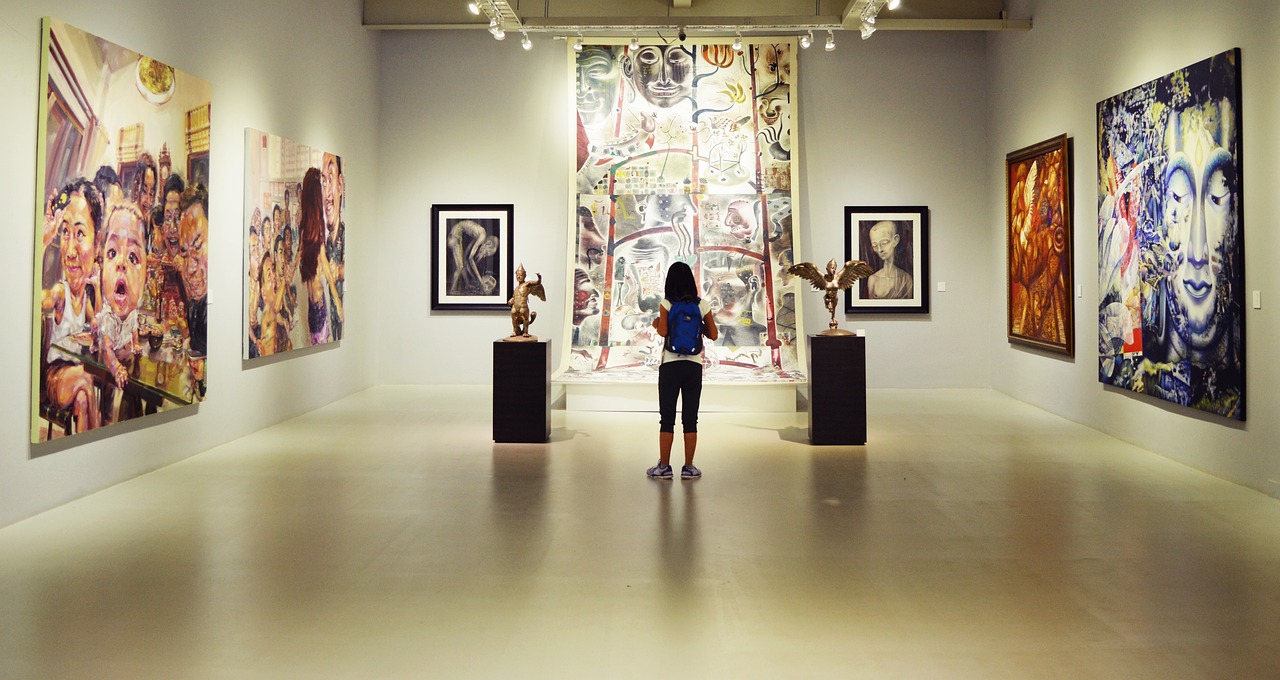Will virtual art exhibitions ever beat seeing works in person?
Posted on 10 Sep, 2024

The introduction of technology has dramatically changed how we perceive art, with virtual exhibits emerging as a notable innovation. These internet venues were especially important during the worldwide pandemic, as they allowed art to be appreciated from anywhere. Virtual exhibits offer exceptional convenience and reach, but the question remains: can they match or outperform the experience of seeing art in person? Our investigation looks into whether virtual encounters can match the physical, immersive character of traditional gallery visits.
The Unique Experience of Seeing Art in Person
Seeing art in person provides a sensory richness that digital formats struggle to match. The ambiance of a gallery or museum, which is influenced by architecture, lighting, and ambient sounds, greatly enhances the overall experience. Observing an artwork up close allows people to appreciate its scale, texture, and real colours, which are typically overlooked in virtual presentations.
Standing in front of a work of art elicits a powerful emotional response. The chance to closely examine an artist's techniques or experience the imposing presence of a sculpture strengthens the relationship with the work. Spatial layouts in physical environments also direct viewers via crafted tales, improving their knowledge and participation.
Social connection improves the in-person experience. Discussing art with others, whether friends, fellow tourists, or guides, adds layers of meaning and delight. The social ambiance of galleries and museums promotes a shared cultural experience, making art appreciation more collaborative and engaging.
Advantages of Virtual Art Exhibitions
Virtual art exhibitions offer a variety of benefits, which have increased their popularity. First and foremost, they give worldwide accessibility, allowing people from all over the world to view art treasures that would otherwise be inaccessible. This greater reach ensures that more individuals can enjoy art without regard for geography.
The advantages of virtual displays cannot be overemphasised. Viewers can explore art without leaving their homes, avoiding the need for travel and meeting personal schedules. This versatility makes art more accessible to people with mobility difficulties or hectic schedules.
Furthermore, digital platforms frequently include novel elements that improve the watching experience. High-resolution photos, comprehensive zoom capabilities, and interactive aspects allow visitors to examine artworks in greater depth. Some virtual exhibitions feature multimedia elements, such as artist interviews and behind-the-scenes footage, which give context and insights. These technological advancements offer a unique way to experience art, adding layers of engagement that traditional exhibitions may not provide.
The Limitations of Virtual Art Exhibitions
Virtual art exhibits do however have various constraints, even if there are many advantages. The difficulty of completely portraying the physical presence of artworks is one main disadvantage. On screens, the nuances of texture, size, and genuine colour are sometimes lost, therefore reducing the immersive experience compared to seeing art in person.
Technical problems can potentially compromise the success of virtual exhibits. Variations in screen quality, internet speed, and gadget capabilities could compromise the general quality of the art shown. For individuals with less advanced equipment especially, this variation might lead to a fractured experience.
Moreover, the solitary character of virtual viewing might reduce the social component of appreciation of art. Essential to the art experience, physical exhibits often offer chances for involvement and debate. Lack of communal participation in virtual environments might make the experience seem lonely, therefore lacking the dynamic interactions found in physical galleries and museums.
The Future of Art Exhibitions
Art exhibits of the future could potentially depend on a hybrid model combining the advantages of virtual and physical forms. Combining digital and physical components, hybrid exhibits provide more access whilst maintaining the tactile and immersive characteristics of in-person encounters. A real gallery would, for instance, offer virtual tours so that distant visitors might interact with the artwork from anywhere.
Future art events are also being shaped by developments in augmented reality (AR) and virtual reality (VR). These technologies provide digital viewers a fresh perspective by enabling immersive settings that replicate the actual presence of art. While VR can provide whole new methods to study art outside conventional gallery environments, AR can improve physical exhibits by overlaying more information or interactive elements.
Another element influencing the change of art displays is sustainability. Virtual platforms help to lessen environmental impact by cutting the demand for actual transportation and venue upkeep. Combining digital and physical media will enable the art community to produce more easily available, creative, environmentally responsible exhibits that satisfy the tastes and demands of a varied audience. This combined strategy shows a bright future for art exhibition and enjoyment.
Reflecting on the Art of Experience
The debate over whether or not virtual art exhibits can compare well to the in-person viewing experience exposes both the advantages and disadvantages of each. It is challenging to duplicate the singular, multimodal experience that physical exhibitions provide when it comes to art. The typical experience of viewing art involves the emotional connection, scale, and texture that are felt in person.
On the other hand, virtual exhibitions offer unparalleled ease of use and accessibility, catering to a worldwide viewership while showcasing cutting-edge functionalities that augment the visual arts encounter. They may not be able to completely replace the in-person experience, but they do so by increasing accessibility and enhancing interaction with art.
The most promising direction for art exhibitions is probably a hybrid strategy mentioned above that combines digital and physical media to provide a fully immersive experience. The greatest features of both worlds could be combined in emerging technologies and hybrid models, which have the ability to close the gap. These integrated models have the potential to revolutionise the way that art is perceived and valued as technology develops, fostering a more diverse and vibrant art scene.
We hope you enjoyed our discussion about art exhibitions and find out more about us and explore the wide range of design jobs available at Careers in Design.
Back to blog
Posted in: Designers
